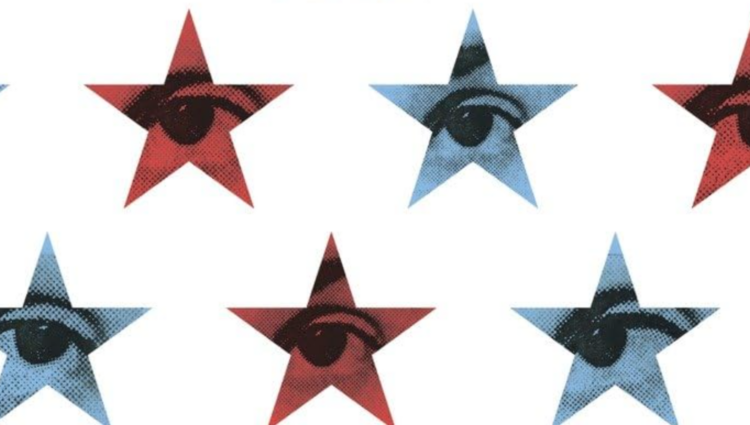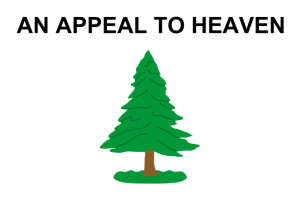 “The book that explains Trump’s dominance may well have been published in 1962.” Or so contend the editors of the Atlantic Monthly. Amazon apparently agrees, since its blurb to promote current sales of Daniel Boorstin’s The Image borrows directly from the editors of the Atlantic and their leap into an increasingly distant past. But is such a leap an accurate one?
“The book that explains Trump’s dominance may well have been published in 1962.” Or so contend the editors of the Atlantic Monthly. Amazon apparently agrees, since its blurb to promote current sales of Daniel Boorstin’s The Image borrows directly from the editors of the Atlantic and their leap into an increasingly distant past. But is such a leap an accurate one?
Boorstin’s subtitle suggests that it might well be: “A Guide to Pseudo-Events in America.”
And just what is a pseudo-event? While it is surely something other than a non-event, it also is not necessarily a false event. So what is it? According to Boorstin, it is a created event, maybe even a carefully plotted, thoroughly arranged event, and perhaps even an invented event.
Prime examples of such events in Boorstin’s day were press conferences and the Sunday morning interview programs, both of which involved news reporters who were attempting to make, and who sometimes succeeded in making, news. The same might be said of the first televised presidential debates, which of course would be the Kennedy-Nixon debates of 1960. The fact that The Image arrived in bookstores not long after that series of events, whether defined as pseudo or otherwise, was not an accident.
If Boorstin was correct, and he was surely not alone, John F. Kennedy “won” those debates, and presumably, the election, because of television. Those who watched them (as opposed to those who listened to them) deemed the photogenic JFK to have been the victor. As a result, it was also not an accident that JFK turned out to be our first celebrity president.
That would be “celebrity” president, as opposed to pseudo-president. Boorstin did not reduce Kennedy to the invented status of pseudo-anything. For that matter, he never specifically refers to Kennedy or anyone else as a pseudo this or that. While there are numerous pseudo-events in this book, there are no pseudo-individuals to be found. But another category of individuals is on full display: Celebrities, whether political or otherwise, are parading everywhere.
More than that, Boorstin’s presumption seems to be that the distance between a celebrity and a pseudo-personality was, all too often, not a very large one. And who qualifies as a celebrity? Boorstin’s definition was, and remains, quite classic: someone who is “well known for his well-knownness.”
The book ranges across a wide spectrum of Americana and Americans, all in the name of chasing after images, whether the chaser is Boorstin himself or his fellow Americans. His concern was that we Americans had permitted images of all sorts to dominate, and even to transform, our lives. More troubling than that, our preoccupation with images had begun to eclipse, even replace, our long-standing assertion of, and attachment to, American ideals.
Boorstin, of course, claimed to have seen through the facade of these images, whether they be his pseudo-events or his celebrities or many other products of what he labeled the “Graphic Revolution.” That would be the rise, nay the explosion, of everything from print to photography, from radio to television, or from silent films to motion pictures, not to mention the rise and explosion of advertising that was triggered by many facets of this revolution. All these advances notwithstanding, Boorstin worried about their power and influence over his fellow Americans.
Would he be even more worried today than he was better than a half century ago? More specifically, would he be as worried as the Atlantic Monthly seems to be today? Very specifically, would he be worried about the rise to power of one Donald J. Trump, a celebrity well-known for his well-knownness long before he became president of the United States? Possibly. Then again, possibly not.
The key chapter, for the purposes of this essay, is titled “From Hero to Celebrity: The Human Pseudo Event.” Since the Graphic Revolution, Boostin contended, “much of our thinking about human greatness has changed. Two centuries ago when a great man appeared, people looked for God’s purpose in him; today we look for his press agent.”
There was a time, Boorstin continued, when “famous men and great men were pretty nearly the same group.” But no more, largely thanks to publicity manufactured by the Graphic Revolution, which had given us the “means of fabricating well-knownness.” Now we have famous men whose fame has nothing at all to do with greatness. Nor does fame necessarily have anything to do with anything truly heroic. At least that was Boorstin’s conclusion better than six decades ago.
More than that, “in a now almost forgotten sense, heroes are self-made.” Celebrities, however, are not. They are beneficiaries of the Graphic Revolution. As a result, concludes Boorstin, “we can make a celebrity, but we can never make a hero.”
Almost as an aside, Boorstin also contends that America’s “democratic beliefs” had gradually “nibbled away” at the heroes that we had inherited from the past. Our “passion for human equality” can be a virtue, but it can also breed “distrust” or at least “suspicion of individual human greatness.” In addition, a “democratic people are understandably wary of finding too much virtue in their leaders.”
That noted and stipulated, Boorstin quickly returns to his larger point and persistent theme: the decline of true heroes and the accompanying rise of celebrityhood, otherwise defined in The Image as the “human pseudo-event.” In other words, if once there were debates over what qualifies as true heroism, post-Graphic Revolution debates center on what, if anything, is truthful about celebrities and celebrityhood.
And what do such preoccupations reveal about ourselves? If Boorstin had previously revealed a soft spot for our democratic passion for human equality, that soft spot suddenly gives way to this: “These new model ‘heroes’” are essentially “receptacles into which we pour our own purposelessness. They are nothing but ourselves seen in a magnifying mirror.”
Then there is the peculiarly American phenomenon of actual heroes who have been transformed into celebrities. Boorstin puts it this way: “Just as real events tend to be cast in the mold of pseudo-events, so in our society heroes survive by acquiring the qualities of celebrities.”
For Boorstin, exhibit A of this transition from hero to celebrity was Charles Lindbergh, even though the aviator/hero surely would have preferred anonymity to “surviving” as a celebrity. But Boorstin even takes him a step lower than that: Once an “authentic hero,” Lindbergh was “degraded into a celebrity.”
In Boorstin’s telling, Lindbergh—the heroic figure of the 1920s—becomes a tragic figure, perhaps even more accurately, a tragic celebrity, for much of the rest of his life. First there was this: “In a dreary, unheroic decade Lindbergh’s flight was a lightning flash of individual courage.” And then there was this: To be an “authentic hero… was not enough. Or perhaps it was too much. For he was destined to be made into a mere celebrity.” To add insult to the infamy, he had made himself a hero before he was made into a celebrity.
For different reasons, neither Daniel Boorstin nor the editors of the Atlantic Monthly would go where the rest of this essay is heading—Boorstin because he could not and did not know the future, and the Atlantic editors because, well, because in all likelihood they would strongly disagree.
But mention of the leader of the America First movement of now nearly a century ago, Charles Lindbergh, compels mention of the leader of the America First movement of today: Donald Trump. The former a hero transformed into a celebrity. And the latter? Might the story ultimately wind up being that of a mere celebrity who becomes a heroic figure?
In fact, might a Trump reversal of the Lindbergh trajectory be even more complete? If the taciturn midwesterner made himself into a hero before being made into a celebrity, will the ultimate story of the voluble New Yorker be that of a pseudo-figure who was made into a celebrity before making himself into a hero—and both with more than a little help from the Graphic Revolution all along the way?
The Atlantic editors would surely and strongly disagree. Who knows, but Daniel Boorstin might dissent as well. Then again, he might not. And the rest of us? There might well be an old-fashioned debate over just who and what qualifies as heroic. In any case, what is indisputable is this: As of 2015 Donald Trump was little more than a mere celebrity. Yes, he was a successful businessman and a television personality. As such, he had to have been on most everyone’s short list of those who are well known for their well-knownness. And that might have been that. Except that it wasn’t.
Having transformed himself from a celebrity into a consequential political figure, having survived both assassination attempts and court battles, not to mention the ridicule and disdain of a felony conviction, having experienced defeat and victory, he is now poised to transform the Washington deep state in particular and perhaps the country at large. This isn’t exactly the trajectory that Daniel Boorstin had in mind while writing The Image.
For that matter, one can only imagine what Boorstin might say about both his handiwork from the early 1960s and our current president. Such imagining is intensified by pondering the fact that our mere-celebrity-turned-potentially-heroic-figure is seeking to restore the very American ideals that Boorstin accused our image-makers of driving out of American life.
What might be the thrust of a Boorstin sequel were he on hand to provide one? Perhaps it would begin with a shrug of the shoulders and this: “Only in America…”
The Imaginative Conservative applies the principle of appreciation to the discussion of culture and politics—we approach dialogue with magnanimity rather than with mere civility. Will you help us remain a refreshing oasis in the increasingly contentious arena of modern discourse? Please consider donating now.












